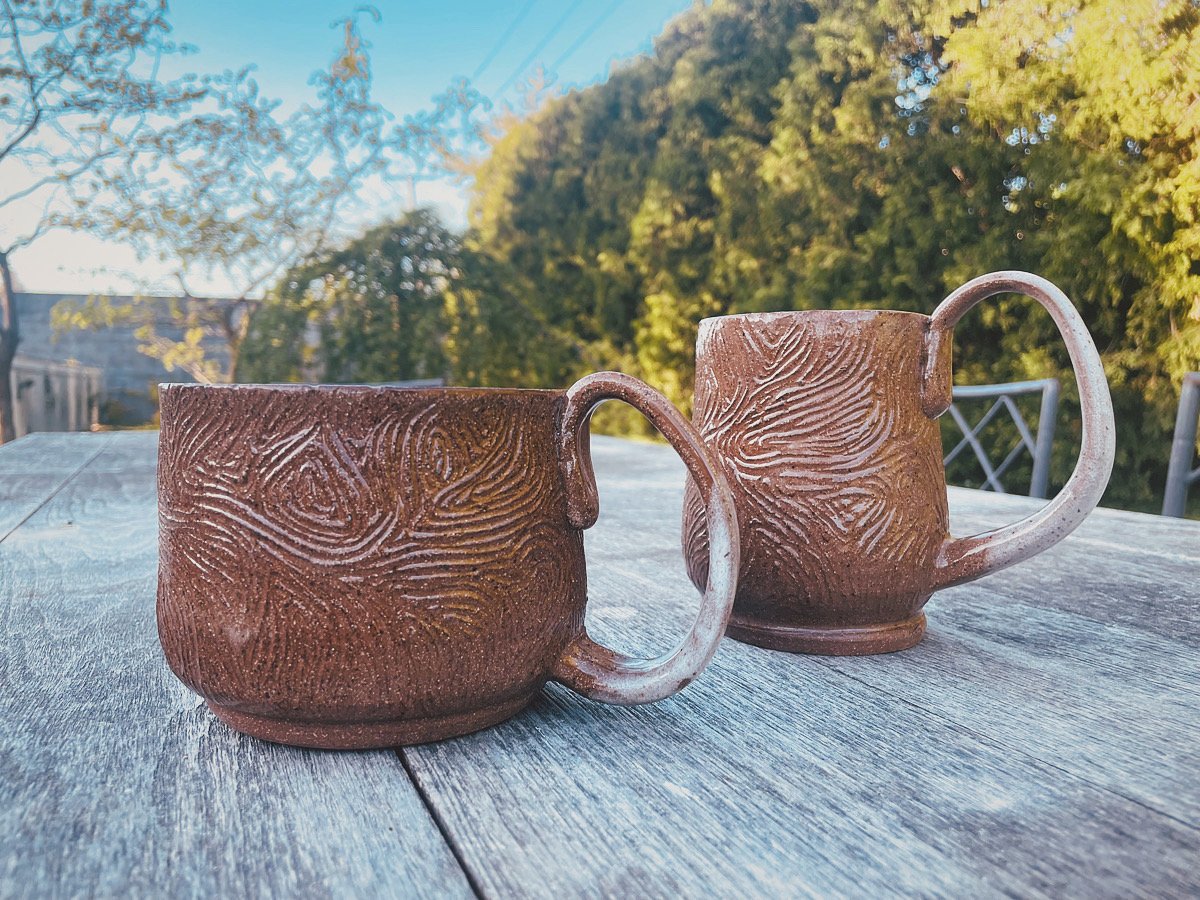Sierras ceramic journey.
My journey with ceramics began on the sandy shores of Michigan, where I grew up. As a child, I spent a-lot of time molding sandcastles and digging trenches, unknowingly laying the foundation for a lifelong love with mud.
From the humble beginnings of beachside sculpting sessions to the bustling down hours in studios, each encounter with clay became a spiritual connection—a way to honor the earth and work with all of the elements.
My grandfather had a potters wheel in our basement growing up. Not only did i first learn to throw pottery in the comfort of my home, but i was taught and guided by my best friend and favorite mentor-my grandfather, George.
When I was a Junior in College I took my first official ceramic class at Central Michigan University. From that day onward I have never loved a process so deeply that ignites my soul and challenges my creativity like ceramics can.
Just as my name, Sierra, evokes the grandeur of the mountains, my work seeks to capture the essence of the elements working together—sea, air, earth, and fire. Giving birth and way to Seair Ceramics. Today, my ceramic journey is a celebration of nature's infinite beauty and the profound connections that bind us all. Through my work, I strive to capture the essence of the natural world and to inspire others to find their own spiritual connection through art. Each creation is imbued with the memories of those carefree days by the shore, reminding us that the process is just as important as the final product. In this way, Sea and Air Ceramics offers more than just items; they provide a connection to the past, a source of comfort, and a celebration of the artistry inherent in every moment. I find great joy in knowing that the pieces I create become cherished possessions, offering solace and comfort to those who hold them close.
Join me on this journey—a journey guided by nature, spirit, and the timeless wisdom of generations past.

—
From the Earth
—
Moldable and pliable in its raw state, clay undergoes infinite possibilities through form and shapes. But through the transformative power of fire, it undergoes a metamorphosis, becoming permanent. In this contradiction lies the beauty and mystery of ceramics—a craft that celebrates both the fluidity of creation and the permanence of form.
It's this very metamorphosis that has ignited my passion for ceramics. The alchemy of clay, water, air, fire, and spirit speaks to my soul in a way that nothing else can. Each piece I create is a testament to the transformative power of art—a reminder that beauty can emerge from even the most humble of beginnings.
The more you know…
Ancient Origins: Ceramics have been crafted by humans for thousands of years, with evidence of pottery dating back to the Neolithic period, around 10,000 BCE.
Diverse Materials: Ceramics encompass a wide range of materials, including earthenware, stoneware, porcelain, and more, each with unique properties and characteristics.
Versatile Applications: Ceramics are used in various industries, from art and architecture to engineering and electronics, due to their durability, heat resistance, and electrical insulation properties.
Firing Process: Ceramics are formed through shaping and then firing clay or other materials at high temperatures in a kiln, which causes them to harden permanently.
Types of Ceramics: Earthenware is porous and often glazed, stoneware is dense and durable, and porcelain is translucent and vitrified, each suited to different uses.
Artistic Expression: Ceramics have long been valued for their artistic potential, with techniques like pottery wheel throwing, handbuilding, and sculpting allowing for creative expression.
Cultural Significance: Ceramics play a significant role in cultural traditions worldwide, from ancient pottery making techniques passed down through generations to contemporary art movements.
Industrial Applications: Ceramics are crucial in industries such as aerospace, automotive, and healthcare, where their heat resistance, strength, and corrosion resistance are highly valued.
Glazing: Glazes are applied to ceramics before firing to add color, texture, and protection, with countless recipes and techniques developed over centuries of experimentation.
Sustainability: Ceramics are environmentally friendly materials, often made from natural resources like clay and sand, and they can be recycled or reused, contributing to sustainable practices in manufacturing and design.
